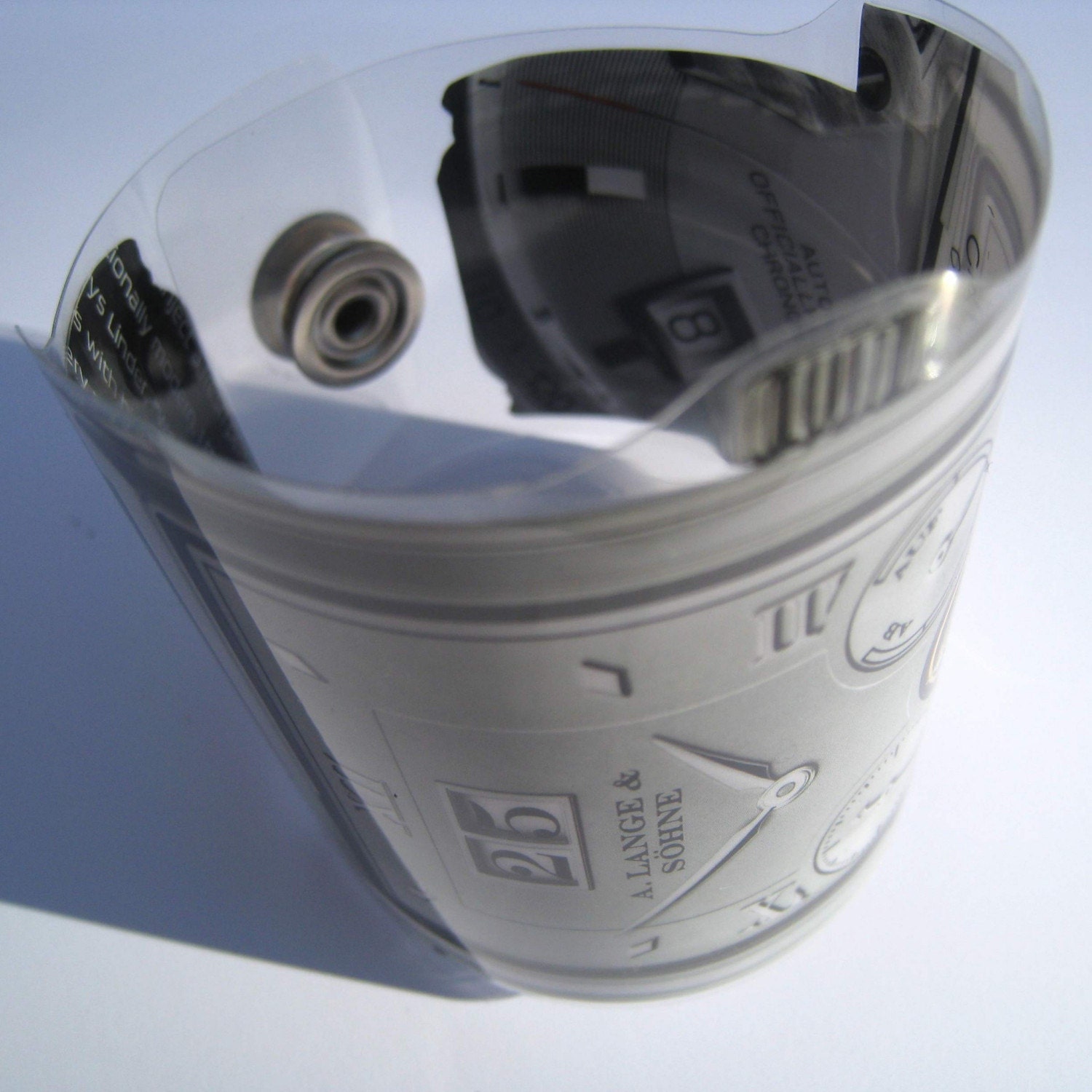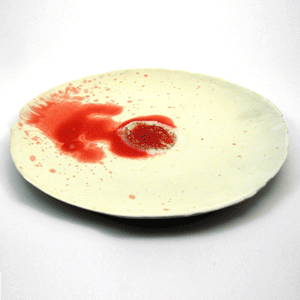A friend passes along this announcement from a trend-declaration firm with its predictions for 2009. At the top of the list:
Buying Out — Motivated by a trifecta of dire economic pressures, changing sustainability beliefs and a growing indie aesthetic, leading-edge consumers are redefining what it means to consume, from upcycling to victory gardening to the radical rethinking of household finances.
Hm. As the author of a book called Buying In, I’m not sure how to take that trend title.
But the truth is, one of the primary goals of Buying In is to educate consumers about both the commercial persuasion industry, and their own behavior, hopefully leaving the reader in a place where s/he can make better decisions — and, in fact, to redefine what it means to consume. So I’m interested to hear about newfound interest in things like upcycling and victory gardens (the latter being something I actually alluded to in this book-related essay).
I am not, however, particularly certain that such change is afoot, or at least not in a particularly widespread way.
I’m a little more convinced by Penelope Green’s take on how consumers are adjusting their spending in this article from today’s Times. Here’s an interesting bit of that:
When Best Buy announced its latest sales figures last month, the company reported “an unprecedented drop in consumer buying of items like flat-screen televisions,” said Ori Brafman, a business expert and an author, with his brother, Rom, of “Sway: The Irresistible Pull of Irrational Behavior,” out since June from Doubleday Business. “But when Wal-Mart released its report last week, there was a surprise. Consumers had increased their flat-screen purchases. Somehow, because Wal-Mart feels like a bargain store, shoppers who have deprived themselves of luxury items elsewhere rationalized their purchases at Wal-Mart as ‘getting a good deal,’ ” Mr. Brafman continued. “Granted, flat-panel TV’s at Wal-Mart might run a little cheaper than elsewhere, but no financial adviser would include one on his or her list of Items to Buy During Tough Times.”
And another:
Kathy Peel, a Dallas-based family manager (that is, a life coach whose niche is training families to run their homes like businesses), said that incidences of feckless budgeting and bad math seem to be on the rise, at least judging from the reports of coaches trained in her system. Leslie McKee, a Peel-trained family manager in Pittsburgh, has noticed a pattern of “people signing up for discount stores that sell in bulk and over-purchasing ‘bargains’ that are so enormous they will not live long enough to use the item,” she said. “Then they call me and spend more money to help them organize it all into mini-malls inside their homes.”
Anyway, it’s worth reading the whole article. And of course if you have thoughts on what’s changing in our consumer habits — particularly what’s short-term and what’s likely to be more lasting — I’d love to hear them.
Are we, in fact, redefining what it means to consume? Or making short-term, reactive adjustments?
Today’s voluminous digital PR mailbag includes a note from someone who has written to me many times — always addressing me by name — to offer me an article. Not an idea, a complete article. “Would you be interested in the 1,000 word bylined article below? …. Kindly let me know if you plan to publish the article…”
“Article” isn’t actually the most accurate word — the piece is sort of an opinion thing about business coaching, written by the head of a business-coaching company, or something. Sort of one of these “Six Rules of Whatever” writeups. I didn’t actually read it.
How am I on this PR person’s blast list? She seems to know my name — but at the same clearly has absolutely no idea who she is writing to.
I get these things all the time. Do they work? Are there publications that accept and publish “articles” like this? What value do they have? Seems like a waste of money to pay someone to send stuff like this around. And since I always tag such solicitations as junk, it kind of eliminates the publicist my from radar permanently.
Anybody out there read the blogs on AdAge.com? Just curious.
Anyway, I was poking around that site earlier this week, and noticed a blog called “Songs for Soap,” and this entry asking “Does Every Brand Have A Sound?”
We all know that there is no longer the slightest stigma involved in a band, indie or established, renting its music to a brand, but I was still a little surprised to read just how far from those forgotten notions we’ve come: The entry concludes with the marketers actually lecturing musicians about how to make sure they’re worthy of such collaborations!
“Artists need to think of themselves as brands; what they stand for, what their values are and what message they want to give,” if they are to succeed in partnering with consumer brands.
So to turn the item’s headline around, the question for musicians, I guess, is: Does your sound have a brand? Maybe there’s a future career here — consultants who help bands write their mission statements and so on.
Anyway, for what it’s worth, this September 4, 2006 Consumed addressed Umpqua Bank’s unusual music-branding work with Rumblefish, whose founder is the first person I can remember articulating the “what does your brand sound like” pitch.
On a related note, the same blog has an entry on Girl Talk cutting a long-form ad “I’m a PC” ad. Interesting ona number of levels, and I hadn’t heard about it. (And again for what it’s worth: My July 20, 2008 column on Girl Talk.)
This morning the ever-busy transom included a blast note from a PR person I don’t believe I’ve ever heard from before. It included an attachment — an article from another publication.
And it began: “The attached is worth noting, despite the fact that the reporter chose to disregard all the research [we] shared with her on” etc., etc.
It continued from there to make the pitch, which had something to do with said data. (The actual subject of the pitch is beside the point for my purposes here.)
Now, as a journalist, I’m not sure how excited I am supposed to be about dealing with a PR person whose pitch includes a de facto slam of some other journalist (whose byline was obviously on the attached article), distributed to an untold number of others.
It seems to imply a set of terms: If I don’t see the story exactly the way the pitch sees the story, then I’m “disregarding” the most important facts. Not only that, I’ll be labeled unprofessional, and that charge will be blasted around indiscriminately in a way that I can’t even respond to it. (I have no idea if the reporter in this case even knows about it.) So my basic reaction to this pitch was: Here’s a PR person I don’t trust.
It would be really easy for the PR person to have made the same point differently — and actually in a way that would make it more appealing for another journalist to pursue. “The attached is worth noting. One surprising angle not explored here is our research showing” etc.
No cheap shots at third parties. No implied confrontation about what the “real” story is (and that the only way it can be told is by mindlesslessly regurgitating the pitch).
Just a thought.

Here’s the latest chapter in my ongoing coverage of counterfunctional watches — meaning watches that do a bad job telling you what time it is, or no job at all, but have some kind of other aesthetic and/or identity payoff (see related Consumed; related Murketing posts; related links):
It took me a minute to figure out what was going on here, but Etsy seller belleslettres‘ Fake Watch Collection is made of magazine images of watches, laminated, with a snap closure. It’s a wearable picture of a watch. Obviously they don’t tell time, but at $15 or so, are cheaper than the real-world Rolexes and so on that they depict.
Via The Storque.

This would be an example of what Friend of Murketing Lucian once called “life imitates Photoshop.” It’s an upside-down planter. Apparently real. Created by Boskke.
 THE BRAND-NESS OF STRANGERS:
THE BRAND-NESS OF STRANGERS:
We’re incidentally exposed to familiar logos constantly, but that doesn’t influence us — does it?
This week in Consumed, a look at an iconic logo, and at what recent research suggests about how exposure to such symbols — via “incidental brand-consumer encounters” — may exert an influence we don’t notice.
Read the column in the November 16, 2008 issue of The New York Times Magazine, or here.
[Bonus link: Study cited in the column is summarized here.]
Consumed archive is here, and FAQ is here. The Times’ Consumed RSS feed is here. Consumed Facebook page is here.
To make a point about Consumed that you think readers of The Times Magazine would be interested in: “Letters should be addressed to Letters to the Editor, Magazine, The New York Times, 620 Eighth Avenue, 6th Floor, New York, N.Y. 10018. The e-mail address is magazine@nytimes.com. All letters should include the writer’s name, address and daytime telephone number. We are unable to acknowledge or return unpublished letters. Letters may be edited for length and clarity.”
The WSJ has a story about lux brands cutting prices. It would appear they have room to do so:
Luxury-goods companies don’t disclose margins for their individual brands, but Louis Vuitton, one of the world’s most profitable labels, is estimated to have a margin of 45 cents on every dollar.
That’s not additional cost due to design or materials or other quality-related expenses in the production process that are passed along to consumers. That’s the markup. That’s profit.
That’s amazing.
The resurgence of the handmade movement under the banner “This isn’t your grandma’s …” has left some seasoned crafters with mixed emotions. “On the one hand, when I first heard it, I knew exactly what they meant, so that is a good thing for marketing,” [Boston-based doll artist Mimi] Kirchner says. “But it got old really fast. Now it sounds like the slogan of people who have no idea what the history of craft in America is all about.”
True, most of what’s considered hip in the craft world these days isn’t what our grandmothers were doing. But the roots of today’s craft brilliance grow in the rich soil toiled by our grandmothers.
Good point. The rest is here.
“GoodGuide.com strives to provide the world’s largest and most reliable source of information on the health, environmental, and social impacts of products and companies.”
Anybody tried this? Any thoughts?
Regarding his new product, a fragrance called “I Am King” ($57), he tells WSJ:
“When you see Barack Obama, you see a strong, elegant black man and when people see my ad, it’s almost like that’s the trend.”
Riiiiiiighhhhhht.
[Consumed on earlier Diddyscent is here. ]
We keep this in the car. When we have to park at a meter downtown, as E points out, this is the change we need.
[Bonus! DIY instructions to make your own Obama “change” jar: 1. Google around for an Obama “change” image. 2. Print it out on sticker paper, at the appropriate size. 3. Cut out and stick onto empty jar. 4. Fill jar with change, to desired level. Crafty!]

So I saw the chair above on Coolhunting the other day (as did plenty of other observers), and I was interested. A chair made to look blood-splattered — I would almost like to have that. But it’s pretty expensive — $5,000.
I had to read the item again to figure out the inspiration for the chair. I don’t have Showtime, and don’t know much about the show Dexter, which is about a serial killer. But that’s the inspiration.
According to this official site, Showtime and Metropolitan Home have revamped a townhouse in Gramercy Park into The Showtime House, “a beacon of modernism inspired by six Showtime original series.” That is, it’s sort of a big walk-in ad for Dexter and The L Word and Californication — you go in and just sort of bask in this aesthetic manifestation of those programs.
And if you like what you see in the Dexter Dining Room And Kitchen, well, you can buy it!
 Somehow to me this stuff becomes way less interesting when I realize it’s essentially a high-end brand extension. But maybe I’d feel differently if I were a Dexter fan. Or maybe it doesn’t matter at all — if I had the money, I might enjoy looking at that chair, or using some of the other products (the plate at left, for instance), and the Dexter factor would just fade into the background. What difference does it really make? I’m not actually sure.
Somehow to me this stuff becomes way less interesting when I realize it’s essentially a high-end brand extension. But maybe I’d feel differently if I were a Dexter fan. Or maybe it doesn’t matter at all — if I had the money, I might enjoy looking at that chair, or using some of the other products (the plate at left, for instance), and the Dexter factor would just fade into the background. What difference does it really make? I’m not actually sure.
Anyway, I also learned from the official Showtime House site that there’s actually collateral merch for all its shows, designed by Savannah College of Art and Design Students — here’s a link to the Showtime SCAD collection, but be warned that a video pops up. (I think this is separate from SCAD’s Working Class Studio). This stuff is somewhat more affordable, and some of it seems like straightforward buyable expressions fandom: T-shirts and the like.
 Other items are more ambiguous, in that (like the chairs) they might be appealing to people who don’t care about the show — the $75 Dexter pillow, for instance. (I did say somewhat more affordable; up to you whether $75 pillows are part of your budget.)
Other items are more ambiguous, in that (like the chairs) they might be appealing to people who don’t care about the show — the $75 Dexter pillow, for instance. (I did say somewhat more affordable; up to you whether $75 pillows are part of your budget.)
Anyway I think this is murkily fascinating — sort of an elevation of the promotional object into a high-design piece.
I wonder if people are buying? And how much their decision is tied to the shows that “inspired” this stuff?




 "
"



 THE BRAND-NESS OF STRANGERS:
THE BRAND-NESS OF STRANGERS:
















 Kim Fellner's book
Kim Fellner's book  A
A